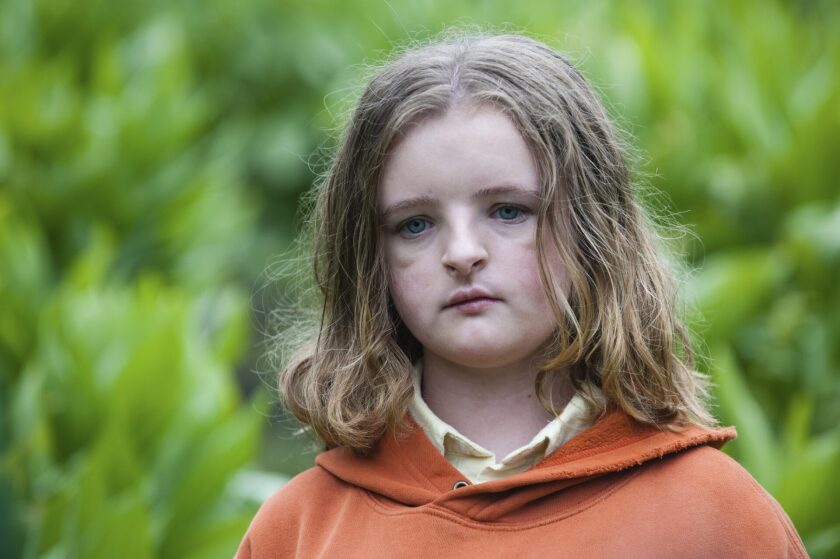
For some students, Halloween is not complete without horror films. A number of these films were made in Utah, which ranks as the thirteenth deadliest state in the U.S., according to a horror film analysis

BYU professor Marc Olivier, co-director of BYU International Cinema
“Utah is a treasure trove of untapped spookiness. We have our own ghost lore, our own repressed memories, a huge variety of outdoor settings and creepy campsites, a pioneer heritage that could inspire period pieces,” he said.
Olivier himself experienced some spookiness when he first moved to Utah, he explained.
“Perhaps the spookiest thing to an outsider is how nice everyone is,” he said. “I had never encountered such spontaneous goodwill, and the horror movie fan in me thought, ‘OK, where are the bodies buried? This is too good to be true. Surely, there must be something sinister about to happen.’”
However, the latter may not be the reason Utah has been used for scary films, Olivier said.
“I know that there are many horror movies made in Utah, but they often do not use Utah as Utah. That is, a northern Utah location is often used as a generic middle-class town, or a southern Utah location is used for a small town western feel or as another planet,” Olivier said.
Joshua Garcia, a BYU alum who studied film, agreed that Utah is attractive to horror filmmakers.
“The initial impression of Utah is a recipe for horror,” he said. “We have deep woods, mountains, deserts, and the people here are majority part of the same, strange, often described as ‘cult-like’ religion. Even if it’s not accurate, that is the resting impression in the subconscious of a lot of filmmakers.”
Another reason that Utah is so popular is that it is a go-to place for horror movies with low budgets, which is the bulk of them, he said.
“We also have a history of real life serial killers like Ted Bundy, who did many of his horrible murders in this state,” Garcia said.
A number of horror movies have been filmed

Hunter Sagapolutele, a BYU student from Provo, shared his thoughts about these scary movies in Utah.
“I know that parts of Hereditary were filmed in Utah, which is crazy because that movie messed me up for a while,” he said. “Besides Hereditary, I don’t know of any major horror movies that were filmed in Utah.”
Hinckley Kennach, a BYU senior and fan of scary films, talked about what he loves about these movies.
“I love the thrill of scary movies, especially when a jump scare is set up perfectly,” he said. “I love how the suspense builds and you don’t know what’s coming next.”
However, he would not recommend Hereditary, Kennach said.
“It was a super boring and slow movie, and part of the plot didn’t make sense,” he said.
Sagapolutele commented on what could make Utah a good place for these films.
“I would say something scary about Utah are the cities that don’t have a lot of streetlights,” he said. “There’s a lot of unpopulated areas in Utah and lots of urban legends that surround those areas. If you haven’t seen the documentary on Skinwalker Ranch
According to Olivier, Utah’s ranking as 13th deadliest state may not be completely true.
“Unfortunately, most statistical studies of horror use only the biggest earners at the box office,” he said.
To find accurate results, he said, the “blockbusters, the cult favorites, and the low-budget, drive-in and straight-to-video films” need to be considered.
“Even one low-budget movie like 'Don't Go in the Woods
Garcia explained that it feels a little “skewed” to him that though horror productions come to Utah, the local filmmaking community has not used their “own lived experience” to “push the boundary of horror filmmaking.”
“The vehicle of horror is to process our primal and visceral fears and anxieties,” he said. “I believe Utahns, like all people, have those in spades, but with each a unique voice.”
He believes there may be “apprehensions in some pockets of the Utah filmmaking community” to show horror, especially in an “un-sanitized way.”
“I believe that’s due to the culture, but if we got rid of that apprehension, I believe some truly fascinating horror films can be homemade in the state,” Garcia said.
According to Olivier, local indicators of Utah, like the dominant religion, “rarely make their way into the script.”
“The movie 'Frozen
Olivier finished with what he loves about scary movies.
“On a personal level, I think horror movies can be a space to experience fear in a safe environment,” he said. “We can identify with a character in horrible circumstances, but we can also survive our own fears because, after all, it's just a movie.”
Horror films are very unique, in their visual language and tension, Garcia added.
“For me, when it does it right it plays like an experience more than a story,” he said. “I am very picky about my horror movies, and I tend to enjoy the ones that rely on more techniques than just jump scares and grotesque creatures.”
A complete list of all horror movies filmed in Utah can be found here